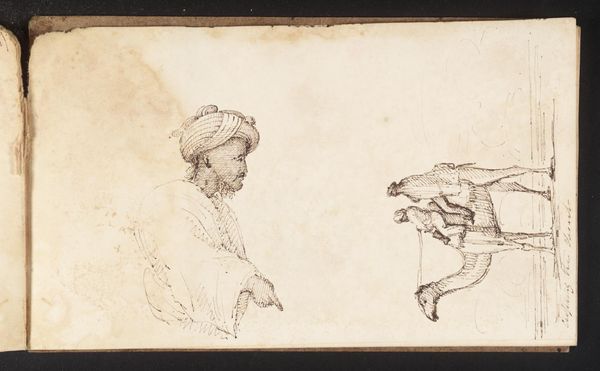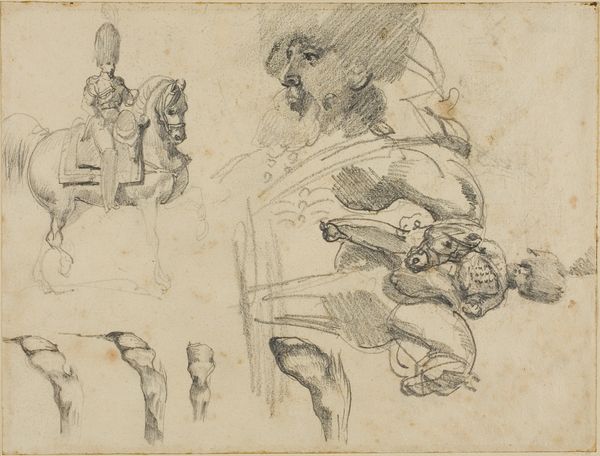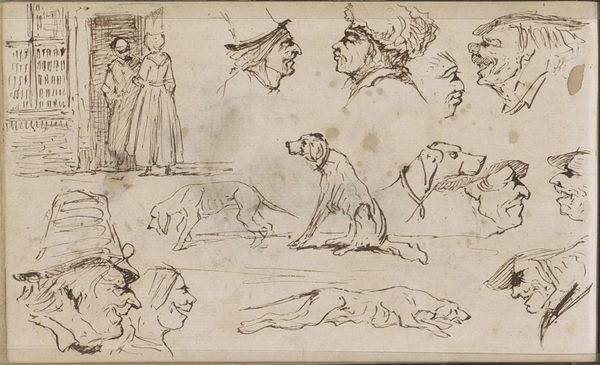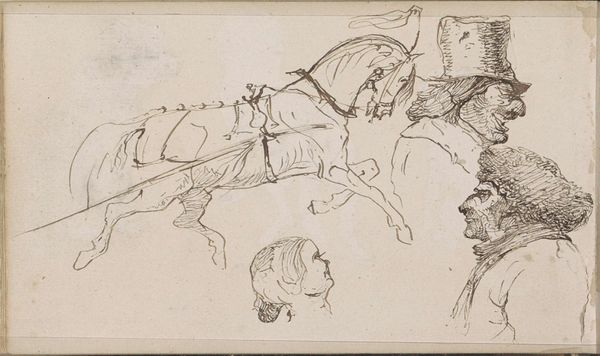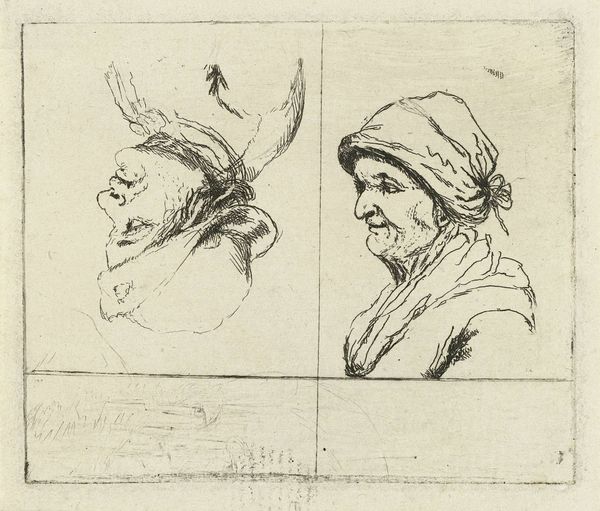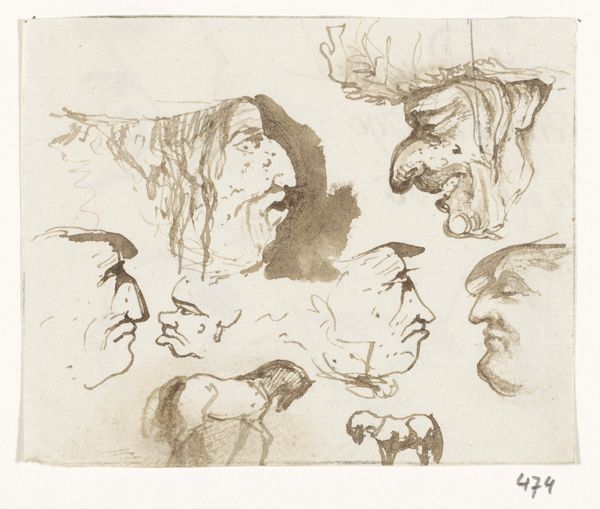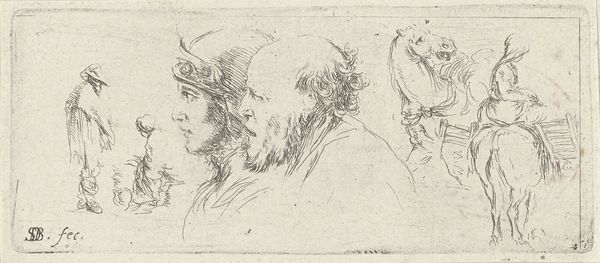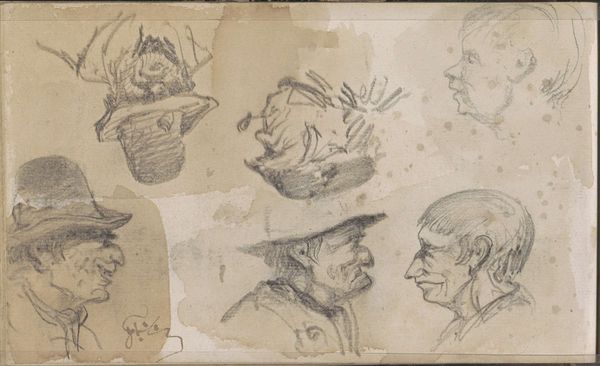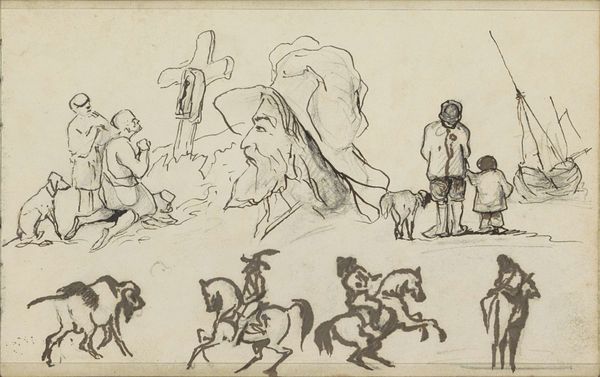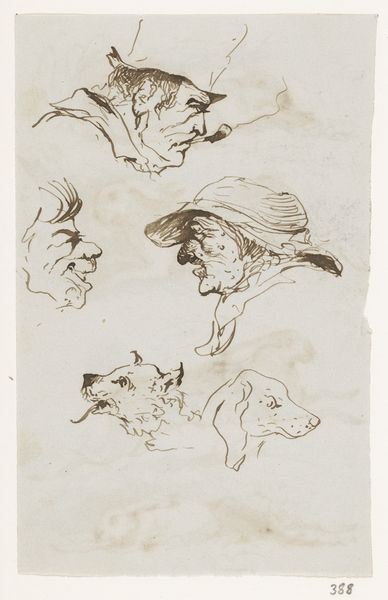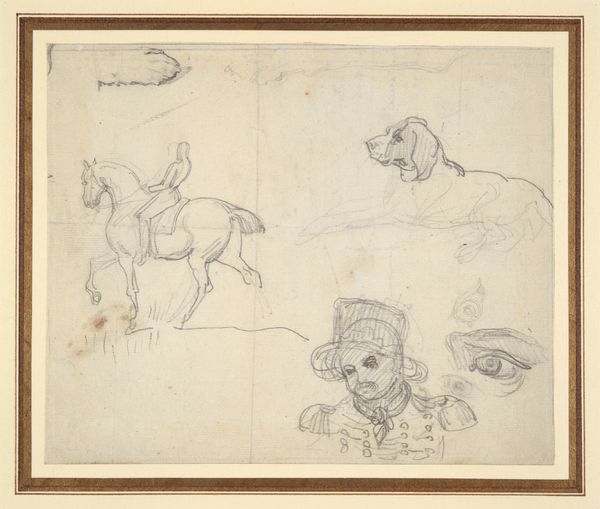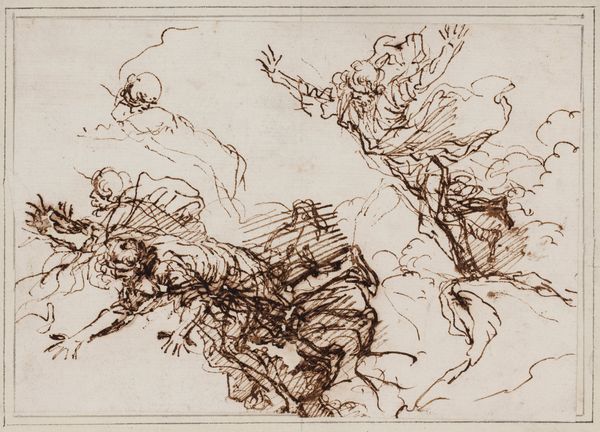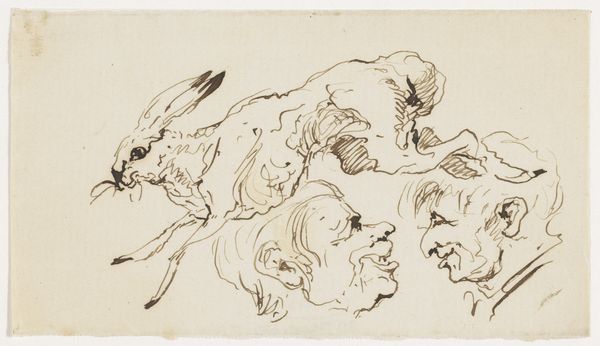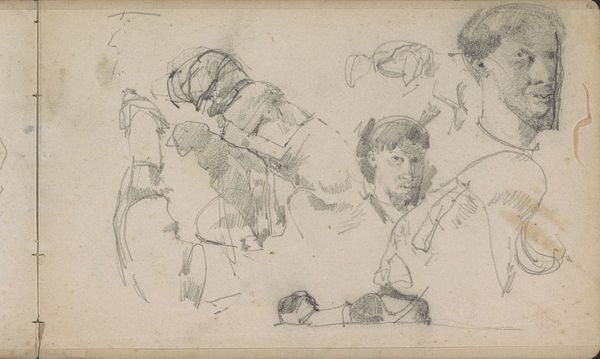
drawing, paper, ink, pen
#
drawing
#
pencil sketch
#
landscape
#
figuration
#
paper
#
ink
#
pen-ink sketch
#
line
#
pen
#
history-painting
#
academic-art
Copyright: Rijks Museum: Open Domain
Editor: Here we have "Hazen, een paard in galop en mannenkoppen," a pen and ink drawing on paper by Johannes Tavenraat, dating from 1864 to 1880. The energy practically jumps off the page, between the galloping horse and the running hares. What stands out to you about its composition? Curator: The dynamism is certainly palpable. Observe how the artist arranges these diverse studies across the plane. Notice the clustering, the juxtaposition of the animal forms against the human heads. These arrangements seem less about narrative and more about exploring form and line itself. How do you read the artist's handling of line weight and density in defining these figures? Editor: The varying line weights definitely give some figures more prominence, but I’m not sure I can decipher a system. Like the hares feel more filled in. Is there a reason? Curator: Perhaps it lies in the distinction between capturing movement versus studying facial expressions. See how the hatching and cross-hatching create a sense of volume and texture in the hares, emphasizing their muscularity in motion. Contrast this with the more contour-driven approach to the human heads, where the focus seems to be on delineating character. The difference is structural, related to how meaning is constructed visually. Do you find any of the heads echoing formal features with the hares, any lines that align them? Editor: That’s a cool way of thinking about it. Actually, looking at the downward-pointing head on the bottom-right, its beard echoes some of the linear marks suggesting the fur on the hare above it. Is that something intentional? Curator: It is a possibility, I wonder to what extent you could expand the link between forms further across the artwork using visual comparison? It makes me wonder, for instance, what an interpretation from the position of gesture may elicit? Editor: I hadn’t noticed that connection before! I’m now curious about how Tavenraat developed this type of form-to-form thinking in his wider body of work. Curator: Indeed, a fertile avenue for exploration! The rigorous application of visual language and structure has clarified the dynamic effects.
Comments
No comments
Be the first to comment and join the conversation on the ultimate creative platform.
